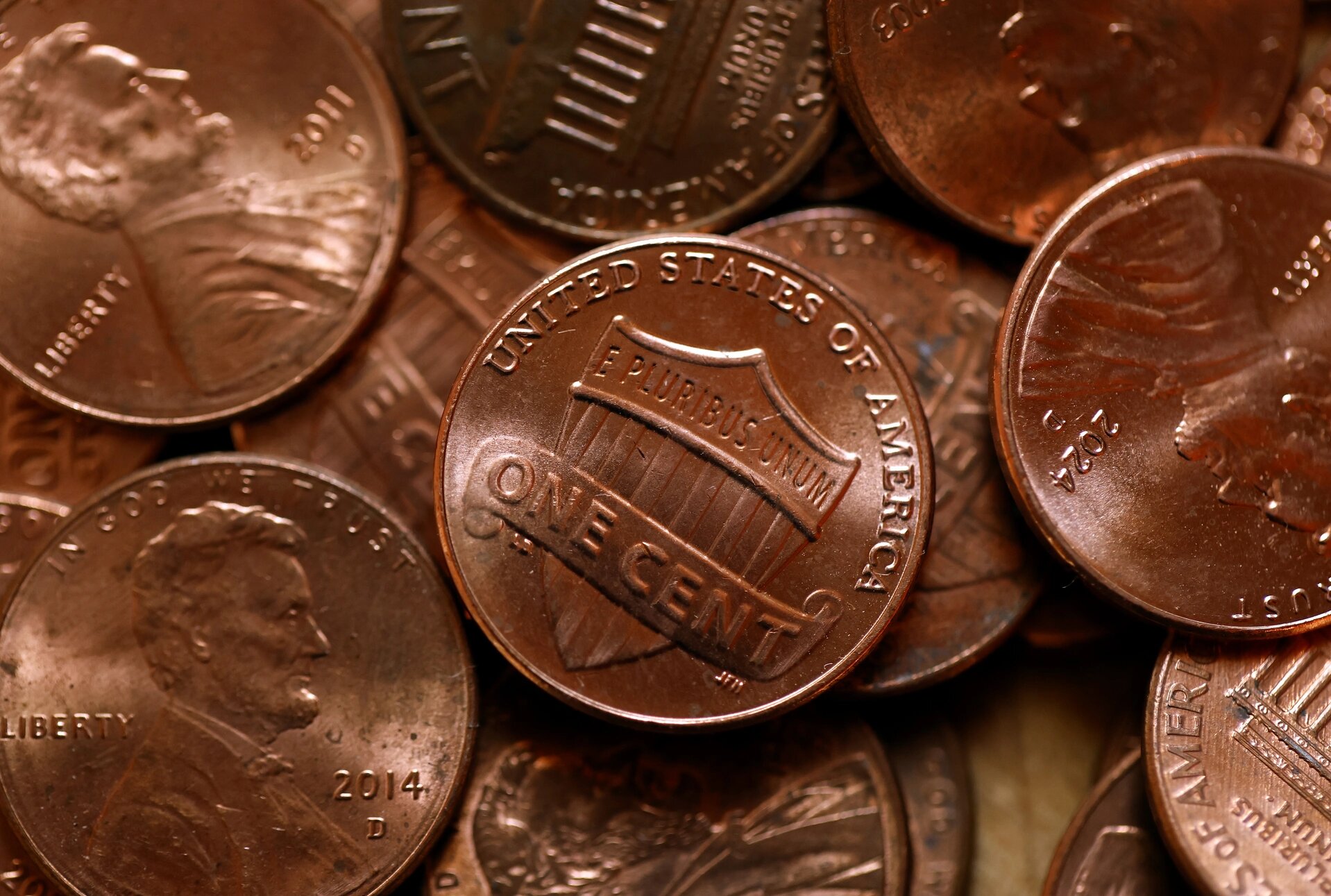The Treasury Department is considering issuing guidance to help businesses navigate the transition, including how to round cash transactions.

President Donald Trump’s decision earlier this year to halt production of the U.S. penny is rippling through the economy faster than expected, triggering widespread shortages of the one-cent coin and headaches for retailers and banks.
The administration has moved quickly to wind down penny production as a cost-cutting measure, following Trump’s February call to “rip the waste out of our great [nation’s] budget, even if it’s a penny at a time.”
The historic transition away from the penny becomes official this week. U.S. Treasurer Brandon Beach struck the final circulating one-cent coin at the Philadelphia Mint Wednesday afternoon, marking the end of the penny first authorized under the Coinage Act of 1792. (Treasury Secretary Scott Bessent had been scheduled to appear at the event but canceled because of a travel issue, according to Treasury.)
While the U.S. Mint plans to produce collector versions of the penny in “limited quantities,” its regular penny operations — which churned out 3.2 billion one-cent coins last fiscal year — are coming to a stop. Winding down that machinery, however, has revealed how deeply the penny remains embedded in everyday commerce. Ending a coin that has circulated for more than two centuries has turned out to be complicated, especially on the Trump administration’s fast track.
Retailers, banks and convenience stores have spent months scrambling to adapt as pennies disappear from cash drawers. Shortages began piling up around Labor Day and have steadily worsened since.
As of last week, the Federal Reserve — which oversees coin distribution for the government — has suspended penny orders at 100 of its 181 regional distribution sites, with more expected to follow.
“People didn’t realize how quickly this was going to spread,” said Austen Jensen, senior executive vice president at the Retail Industry Leaders Association, which represents major retail chains.
The Treasury Department has considered issuing guidance to help businesses navigate the transition, including how to round cash transactions and handle payments without one-cent coins, according to people familiar with the discussions.
But trade groups representing retailers, grocers, restaurants and gas stations are urging Congress to pass legislation establishing a national standard for rounding cash transactions to the nearest nickel. Without such a policy, businesses are worried about potential class-action lawsuits under state consumer protection laws that could argue rounding shortchanges customers. Industry groups say a federal standard would create consistency and protect businesses from legal risk.
The government shutdown has complicated efforts to move legislation forward. A bipartisan bill setting a national rounding standard cleared the House Financial Services Committee in July but has yet to reach the full House, which was out of session for seven weeks starting in September.
Steve Kenneally, senior vice president of payments at the American Bankers Association, said banks are especially concerned about cashing checks for noncustomers. Most banks have so far been rounding those transactions up to the nearest nickel, he said.
“We want to make sure banks don’t suffer any inadvertent regulatory mishaps, because we’re trying to do the right thing and round in favor of the customer,” Kenneally said. “We would like to have something, whether it’s from a regulator or legislation, that gives us guidance and that makes it a consistent customer experience everywhere. Having different businesses have different policies just doesn’t feel right.”
The American Bankers Association also said that the Fed’s decision to no longer accept penny deposits at many coin distribution locations once they run out of pennies is preventing the existing supply of pennies from more efficiently circulating throughout the country.
Fewer terminals accepting penny deposits makes it difficult for banks with excess pennies to recycle those coins back into circulation. “This policy is accelerating the slowdown of penny circulation drastically,” the group wrote in a letter to Treasury and the Fed last month.
A Fed spokesperson said in a statement that “coin distribution locations accepting penny deposits and fulfilling orders will vary over time as localized inventory is depleted at certain coin distribution locations.”
Treasury said that eliminating the penny will save about $56 million annually. The U.S. Mint says the cost of producing each penny rose nearly 20 percent in fiscal 2024 to 3.69 cents per coin — more than triple its face value. Treasury officials said those “ongoing increases in production costs and the evolution in consumer habits and technology” rendered the penny “financially untenable.”
Bessent’s decision to halt production followed a legal determination that the penny was “no longer necessary to meet the needs of the United States,” making him the first Treasury secretary to reach that conclusion.
An estimated 300 billion pennies remain in circulation, according to Treasury. The department emphasized that the coin “remains legal tender and will retain its value indefinitely.”
